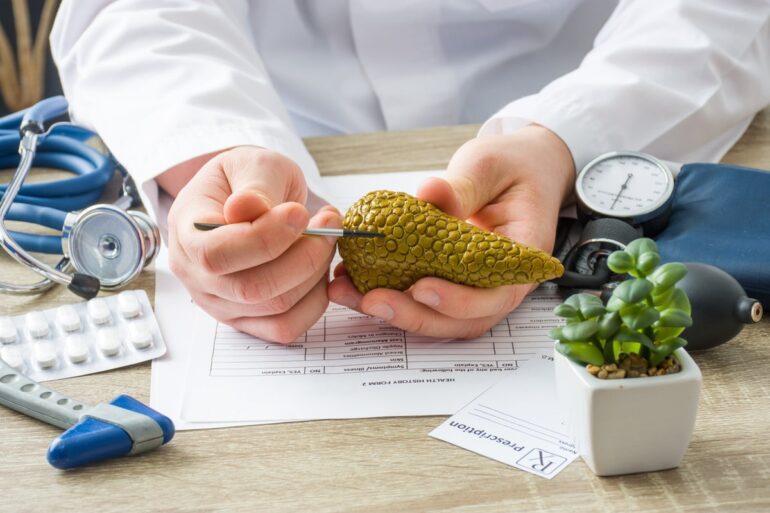-
 play_arrow
play_arrow
BayRadio Listen Live Broadcasting in Spain
Robotic Surgery Against Ovarian Cancer: Greater Precision, Less Pain and Faster Recovery

Dr Rodolfo Martín Díaz, Head of the Gynaecology Department at Quirónsalud Torrevieja Hospital, outlines the most common symptoms, risk factors, and the keys to early diagnosis.
Each year, around 3,300 women are diagnosed with ovarian cancer in Spain, making it the sixth most common gynaecological tumour. Although its incidence is lower than that of breast or cervical cancer, its mortality rate is significantly higher.
“The main challenge with ovarian cancer is that it is usually diagnosed at an advanced stage, which makes treatment more complex and worsens the prognosis,” explains Dr Rodolfo Martín Díaz, Head of Gynaecology and expert in robotic gynaecological surgery at Quirónsalud Torrevieja Hospital.
Unlike other gynaecological tumours, this cancer tends to present silently. Its early symptoms are vague and unspecific: abdominal bloating, pelvic pain, and digestive or urinary changes.
“Many women mistake it for digestive discomfort or hormonal issues. This ambiguity delays diagnosis,” warns Dr Díaz.
How is it Diagnosed?
Diagnosis typically begins with a transvaginal ultrasound and tumour marker analysis, such as CA-125. If there is reasonable suspicion, more advanced imaging techniques such as CT scans are employed. However, definitive confirmation can only be obtained through histological analysis following surgery.
Key Risk Factors
The specialist is clear:
“Age is a major factor—risk increases after the age of 50. Other factors include a family history of ovarian or breast cancer, genetic mutations such as BRCA1 and BRCA2, nulliparity, endometriosis, and prolonged hormonal therapies. Genetics plays a crucial role, especially in hereditary cases,” adds the Quirónsalud specialist.
Robotic Surgery: Technology Enhancing Precision
In recent years, robotic surgery has become essential in the surgical management of early-stage ovarian cancer. Dr Díaz leads one of the pioneering teams in Spain using the Da Vinci robotic system, a device that has transformed the way complex surgical procedures are performed.
“Robotic surgery is an evolution of laparoscopy. It provides a 3D view, a broader range of motion, and millimetre-level precision in real time,” he explains.
Unlike traditional surgery, the robotic approach allows the surgeon to operate with improved ergonomics, reducing fatigue and enhancing accuracy in delicate procedures.
This technique is particularly effective in patients with stage I or II localised tumours, or those who may benefit from primary or interval cytoreductive surgery.
“Preoperative imaging assessment is crucial to select the right candidates,” notes Dr Díaz.
Patient Benefits
The benefits of this technology are numerous: reduced blood loss, fewer postoperative complications, smaller incisions, and a quicker recovery.
“In many cases, patients are discharged within two to three days and can return to their usual activities in less than a week,” the doctor confirms.
For younger women, minimally invasive surgery offers an added advantage:
“It is less aggressive on the reproductive organs, which may be crucial for patients wishing to preserve fertility,” he adds.
The impact on quality of life is also significant. Reduced postoperative pain, improved mobility, and less aesthetic damage help patients cope better with both the recovery process and the emotional aftermath.
“Less pain, better body image, and a lower risk of long-term complications such as adhesions—everything contributes to the patient’s wellbeing,” says Díaz.
Surgical Planning: A Team Effort
However, this technique requires multidisciplinary planning.
“Each robotic procedure demands meticulous preparation. It’s a collaborative effort involving radiologists, anaesthetists, specialist nurses, and instrument technicians with specific training,” the gynaecologist stresses.
Before each operation, a preoperative assessment is carried out, including CT scans, tumour marker analysis, and an overall evaluation of the patient’s functional status. Specific protocols are followed depending on the type of surgery and tumour location.
Looking ahead, the goal is clear: increasingly personalised, less invasive surgeries with better oncological and functional outcomes.
Written by: Lily
Similar posts
Recent Posts
- Therapeutic advances usher in a new era in the fight against pancreatic cancer
- Quirónsalud Torrevieja Hospital celebrates 25 years of medical excellence, innovation and commitment to health
- Quirónsalud Torrevieja Hospital inaugurates the exhibition “ALTAS”, a tribute to patients and to 25 years of shared trust
- Post-operative massages? The definitive guide to ensuring the success of your cosmetic surgery
- Alzheimer’s Disease Could Double in Incidence over the Coming Decades

Ctra. Cabo La Nao, CC La Nao, Local 6 03730 Javea, Alicante, Spain
Advertise with us
Do you have a business in Spain? Do you provide a service to the expat community in Spain? Would you like your message to reach over 500.000 people on a weekly basis?
BayRadio is a community orientated radio station offering fantastic content to our many listeners and followers across our various platforms. Contact us now and find out what Bay can do for you!
Our business is helping your business grow.
BAY RADIO S.L. © 2024. ALL RIGHTS RESERVED. WEB DESIGN BY MEDIANIC









Post comments (0)